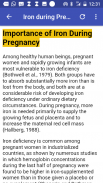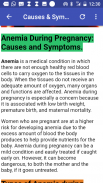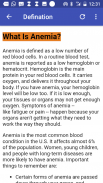






Pregnancy & Anaemia

Pregnancy & Anaemia ਦਾ ਵੇਰਵਾ
Anemia in pregnancy is a major public health problem, where it has been estimated that 41.8% of pregnant women worldwide are anemic. The majority (at least half) of this burden is due to iron deficiency. However, there is a significant variation in prevalence of anemia, both within and between countries. Because of physiological changes during pregnancy, pregnant women are at higher risk of anemia and in particular iron deficiency anemia, which is the most common type of anemia during pregnancy. Hematological changes during pregnancy, especially expansion of blood volume, often confuse the diagnosis of anemia and its treatment. Because of increased iron and folic acid demands during pregnancy, pregnant women are more susceptible to develop anemia. Moreover, pregnant women are more susceptible to the other types of anemia that affect other women of childbearing age such as hereditary anemia, sickle cell disease and aplastic anemia. Anemia during pregnancy, particularly the severe form, is associated with increased maternal morbidity and mortality and contributes to 20% of the maternal mortality in Africa. Anemia in pregnancy is associated with negative consequences for both the woman and neonate. Therefore, great effort is needed to develop/reassess and implement programs to control and prevent anemia during pregnancy.





















